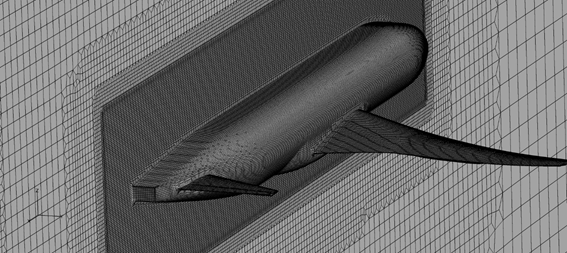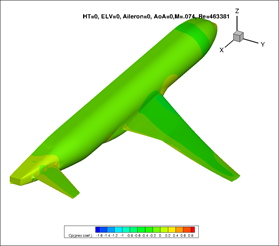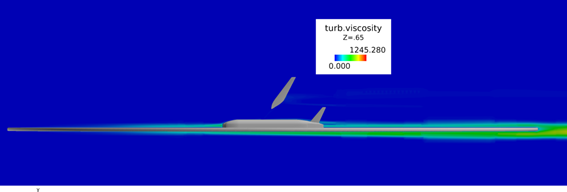Aircraft gust alleviation technology
JAXA Supercomputer System Annual Report April 2016-March 2017
Report Number: R16E0031
- Responsible Representative: Kazutoshi Ishikawa(Aeronautical Technology Directorate, Next Generation Aeronautical Innovation Hub Center)
- Contact Information: Kenichi Saitoh(ksaitoh@chofu.jaxa.jp)
- Members: Kenichi Saitoh, Hamidreza Kheirandish
- Subject Category: Aviation(Aircraft)
Abstract
In the research and development of aircraft gust alleviation technology, we aim to reduce the accident in the cabin hit by clear air turbulence. To suppress such an aircraft motion, we are developing a control technology using LIDAR which detects the turbulence. Currently, we are verifying the theory by the wind tunnel test.
Goal
Objective
References and Links
Use of the Supercomputer
JSS is used for an estimation of a stability derivative of a wind tunnel model.
Necessity of the Supercomputer
CFD analysis is used to obtain stability derivative coefficients, if there is an unknown phenomenon observed. System design and its verification based on the simulation will be necessary in the future because the wind tunnel test is difficult and expensive.
Achievements of the Year
A grid of the half model with three control surfaces was generated. (Fig.1).
An example of the result is shown in Fig. 2.
Boundary layer of the wind tunnel wall can be simulated by the grid. (Fig. 3)
Publications
N/A
Computational Information
- Parallelization Methods: Process Parallelization,Serial
- Process Parallelization Methods: MPI
- Thread Parallelization Methods: n/a
- Number of Processes: 96
- Number of Threads per Process: 1
- Number of Nodes Used: 3
- Elapsed Time per Case (Hours): 4.5, 5
- Number of Cases: 30, 220-330
Resources Used
Total Amount of Virtual Cost(Yen): 60,963
Breakdown List by Resources
| System Name | Amount of Core Time(core x hours) | Virtual Cost(Yen) |
|---|---|---|
| SORA-MA | 9,828.75 | 16,165 |
| SORA-PP | 3,743.15 | 31,959 |
| SORA-LM | 363.32 | 8,174 |
| SORA-TPP | 0.00 | 0 |
| File System Name | Storage assigned(GiB) | Virtual Cost(Yen) |
|---|---|---|
| /home | 3.97 | 13 |
| /data | 562.03 | 1,899 |
| /ltmp | 813.80 | 2,750 |
| Archiving System Name | Storage used(TiB) | Virtual Cost(Yen) |
|---|---|---|
| J-SPACE | 0.00 | 0 |
Note: Virtual Cost=amount of cost, using the unit price list of JAXA Facility Utilization program(2016)
JAXA Supercomputer System Annual Report April 2016-March 2017





